Flower Glossary is reader-supported. When you buy through links on our site, we may earn an affiliate commission.
Hydrangeas are some of the most popular plants for several very good reasons. They produce beautiful, big clusters of pink, white, or blue flowers. And they are also highly versatile, growing either in full shade or full sun. These hardy plants are almost entirely pest and disease resistant.
Hydrangeas aren’t bothered by salt and humidity, and can also survive in extremely cold winters. They may look delicate, but these plants have real staying power. You’re sure to enjoy these strong, easy to care for beauties in your garden year after year.
Below, we’ll cover the most popular types of hydrangeas and how to grow and care for them. They’re an excellent choice for a long-lasting, beautiful garden.
Table of Contents
How Many Types of Hydrangeas Are There?
Interestingly, experts are unsure about the number of hydrangea varieties. We’ve seen estimates as little as fourteen, and as many as eighty. Most are shrubs that grow one to three meters in height. Some varieties present as small trees and lianas that climb up trees. These can reach heights of nearly a hundred feet.
It’s also said that hydrangeas have more than 600 cultivars. They can be either deciduous or evergreen making them one of the most widely grown and diverse species across the globe. Here in America, only six types of hydrangeas are commonly grown.
What Are the Different Types of Hydrangeas?
With so many hydrangea varieties and cultivars, only six types of hydrangeas are popularly grown in America. All of these varieties bloom in colorful clusters of flowers that grow as shrubs. But the differences between them will help you determine which to choose for your garden.
Bigleaf Hydrangeas
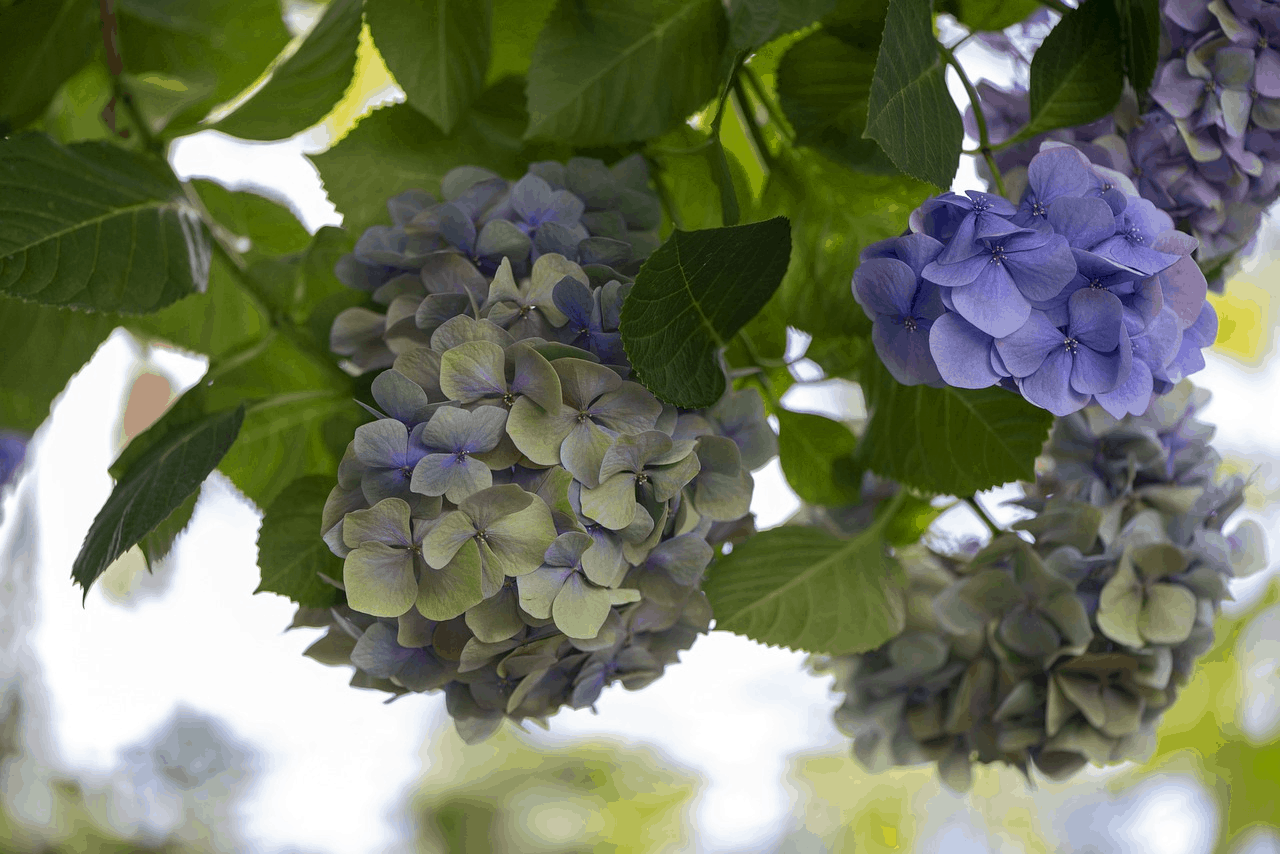
Bigleaf Hydrangeas are also known as Hortensia, Florist’s Hydrangeas, and French Hydrangeas. They are the most common type of hydrangea grown in America. Under the umbrella of Bigleaf Hydrangea, there are 3 varieties: mophead, lacecap, and mountain hydrangeas.
Bigleaf Hydrangeas have glossy leaves and blooms that form like balls at the end of a long stem. Depending on the soil, they can either grow white, red, purple, blue or pink flowers. Ideally, they should have a lot of water, well-drained soil, morning sun, and afternoon shade.
Panicle Hydrangeas
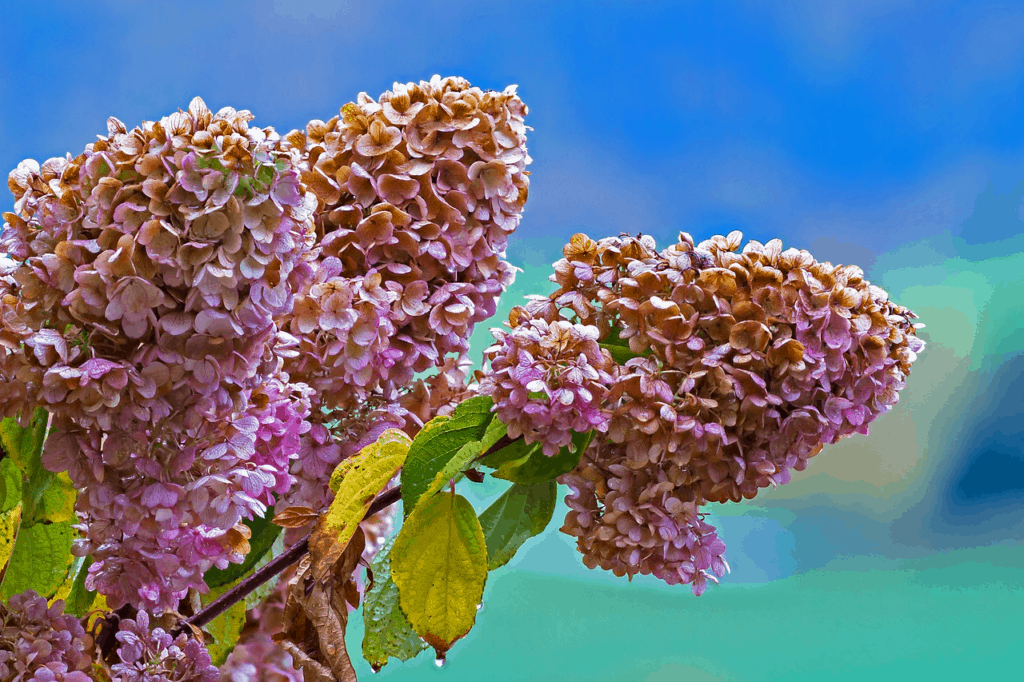
Panicle Hydrangeas have an unusual cone-shaped bloom. They are also smaller, thinner, and have rougher leaves than typical hydrangeas. These are the only type of hydrangea that form trees, with their central stems becoming trunks.
Panicle Hydrangeas are also the most cold-hardy of all hydrangeas, able to grow in zones 3-7. Though they need more sunlight than typical hydrangeas, their large blooms stick around for a long time. This gives them a great chance of surviving well into the winter.
These are great for nearly every garden due to their hardiness. We also like them because their blooms can change color. Some varieties start as white flowers and turn pink. Others begin with green flowers that change to white then pink with the seasons.
Smooth Hydrangeas
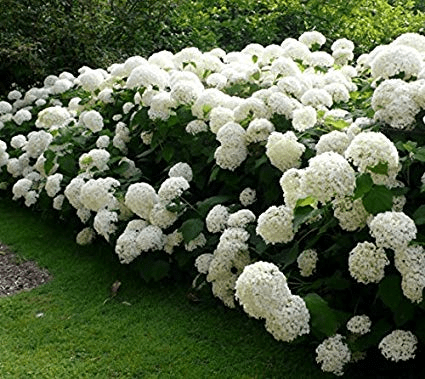
Also known as wild hydrangeas, Smooth Hydrangeas are hardy shrubs that tolerate hot climates well. Their leaves are often heart-shaped, thin, and floppy, but they grow thick enough to use as hedges. Like Panicle Hydrangeas, they can thrive in full or partial sun landscapes.
Certain varieties of smooth hydrangea will take on pink or green hues, but they are almost always white. Since they grow large round flowerheads, they are often thought to look like snowballs.
Climbing Hydrangeas
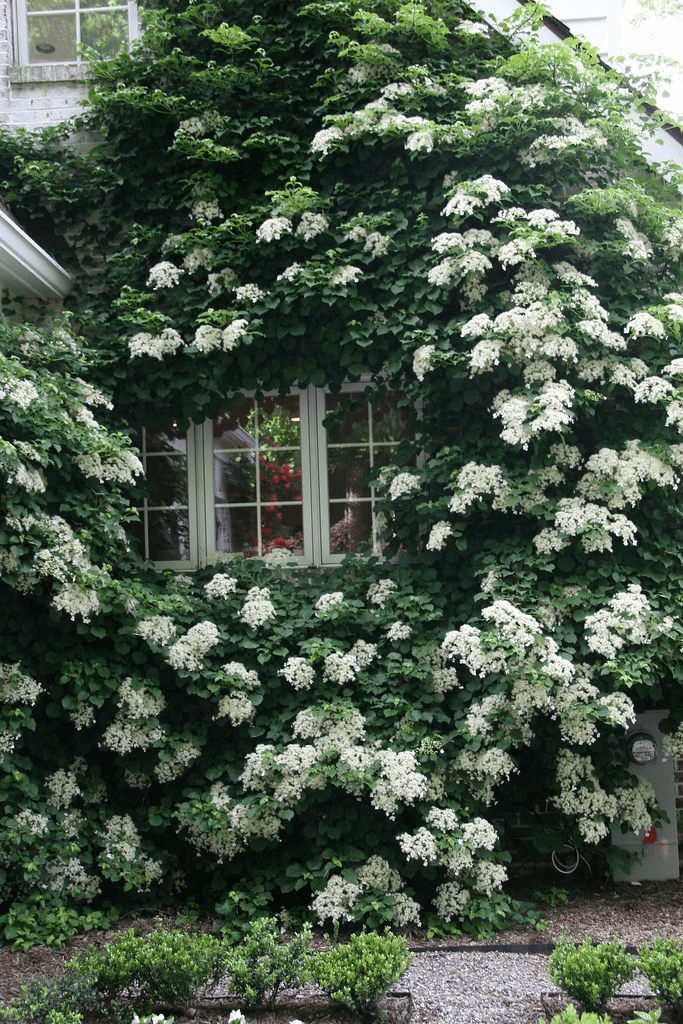
The climbing hydrangea is unique in that it is actually a vine. It can reach heights of up to eighty feet. This slow-growing plant takes three or four years to begin flowering. When it does, it produces flowers that look like Lacecap Hydrangeas and have a very pleasant scent.
Climbing hydrangea vines are thick and heavy, so they need some support. Without a trellis or wall they will grow as shrubs. Climbing Hydrangeas prefer full sun but can tolerate partial shade.
Oakleaf Hydrangeas
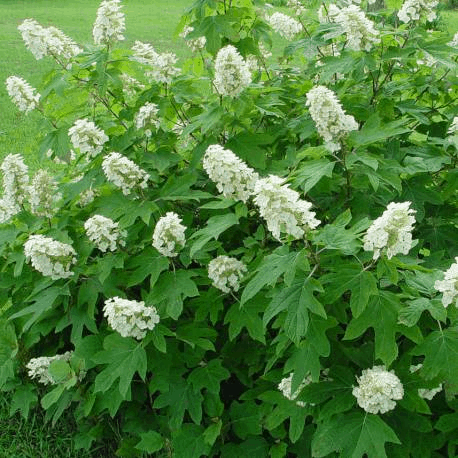
Oakleaf hydrangeas get their name from their leaves, which look a lot like red oak leaves. Interestingly, the leaves change colors in the fall. They will turn from a golden orange or bright red to a deep mahogany color that’s perfect for the season. The blossoms of Oakleaf Hydrangeas will also change as they mature, from white hydrangeas to a lovely pink.
Oakleaf Hydrangeas are one of the sturdiest varieties of hydrangeas. They can withstand most climates across the nation and prefer dry, well-drained soil with plenty of sun. This will help them last well into winter.
Mountain Hydrangeas
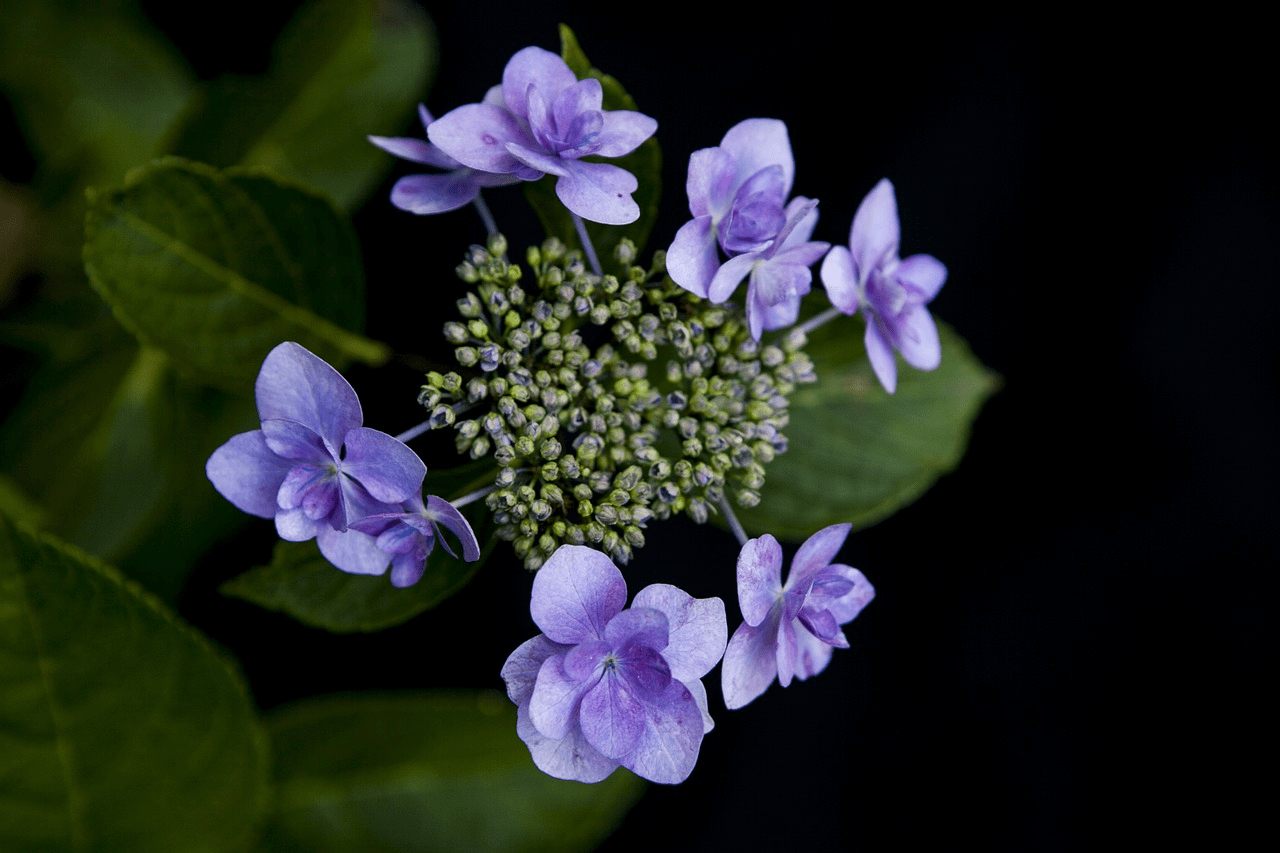
Mountain hydrangeas are rather small compared to other varieties. They grow in shrubs about two or three feet high with very light pink, lace-cap like blossoms. During the fall their leaves turn from green to auburn, making this a great plant for your fall garden.
Mountain Hydrangeas prefer part shade, moist but well-drained soil, and shelter from the wind. They can be hard to find in nurseries, but make a great addition to your garden. Because of their size, they can also grow well indoors or in flower pots.
Growing Tips & Care Information
Hydrangeas are very adaptable and sturdy, and will do well in most types of soil. Regardless of this, they typically do better in well-drained soil with around four hours of morning sun. They also tend to grow better with plenty of water, since they have shallow roots and can dry out quickly.
Tip: Fertilizer isn’t necessary, though two to three inches of shredded bark mulch on the soil will help retain moisture.
How to Grow Hydrangeas
Hydrangeas are easy to grow. First, dig a hole that is two feet wider than the root ball. It should be deep enough that the plant sits level or slightly higher than the surrounding soil. Build a small mound to help with water drainage from the base of the plant.
Plant them in a sheltered location, where they will receive tender morning light but have shelter from the midday sun. Keep them away from trees, since these shrubs need a lot of water. They will end up competing for water if they are too close to each other.
How to Grow Hydrangeas from Cuttings
The process of propagating hydrangeas is rather simple, as the plant will do most of the work itself. Here’s how to do so:
- Dig a small trench near hydrangea plant
- Bend one branch into the trench 6-12 inches deep
- Make scratches in the bark where it touches the soil
- Fill trench and put a brick or stone on top
- When the branch forms its own root system, dig it up. Separate it from the main plant and transplant it to the desired location
What’s the Best Time to Plant Them?
Fall or early spring is the best time to plant hydrangeas. This gives them plenty of time to establish healthy roots. You should also plant them either early or late in the day when the sun is low and the air is cool. This helps protect them against heat stress. Make sure the plants stay well hydrated.
When Do Hydrangeas Bloom?
These hardy shrubs don’t take much to grow, will fill your garden fast, and will bloom from early spring and stick around through fall, making them a low-maintenance option for your garden.
How to Prune & When to Prune Hydrangeas
When it comes to pruning hydrangeas, you want to wait until the plants go into their summer bloom. The best time for trimming them is in the fall or even as late as winter. Keep in mind though, they don’t need pruning every year. Occasional pruning will improve their performance. To trim them cut them back to one-half or one-third the height, forming a tidier bush.
Care Tips
Hydrangeas don’t need a lot of maintenance, but there are a few things you should know. These tips will keep them growing stronger year after year:
- Deeply water 3x a week
- Bigleaf and smooth hydrangeas will need more water than other varieties
- Keep moisture off flowers and leaves, and instead, water the roots with a soaker hose
- Water in the morning to protect them throughout the day
- Pests aren’t common but can appear if the plant is stressed
Now that you know the popular types of hydrangeas grown in the United States, as well as how to grow and care for them, take a look at our other blogs on popular flowers and garden tips.
At Flower Glossary, we look for ways to keep your garden healthy and full of color throughout the year. Follow us for more plant and flower care tips, tricks, and beautiful flowers for your garden.
